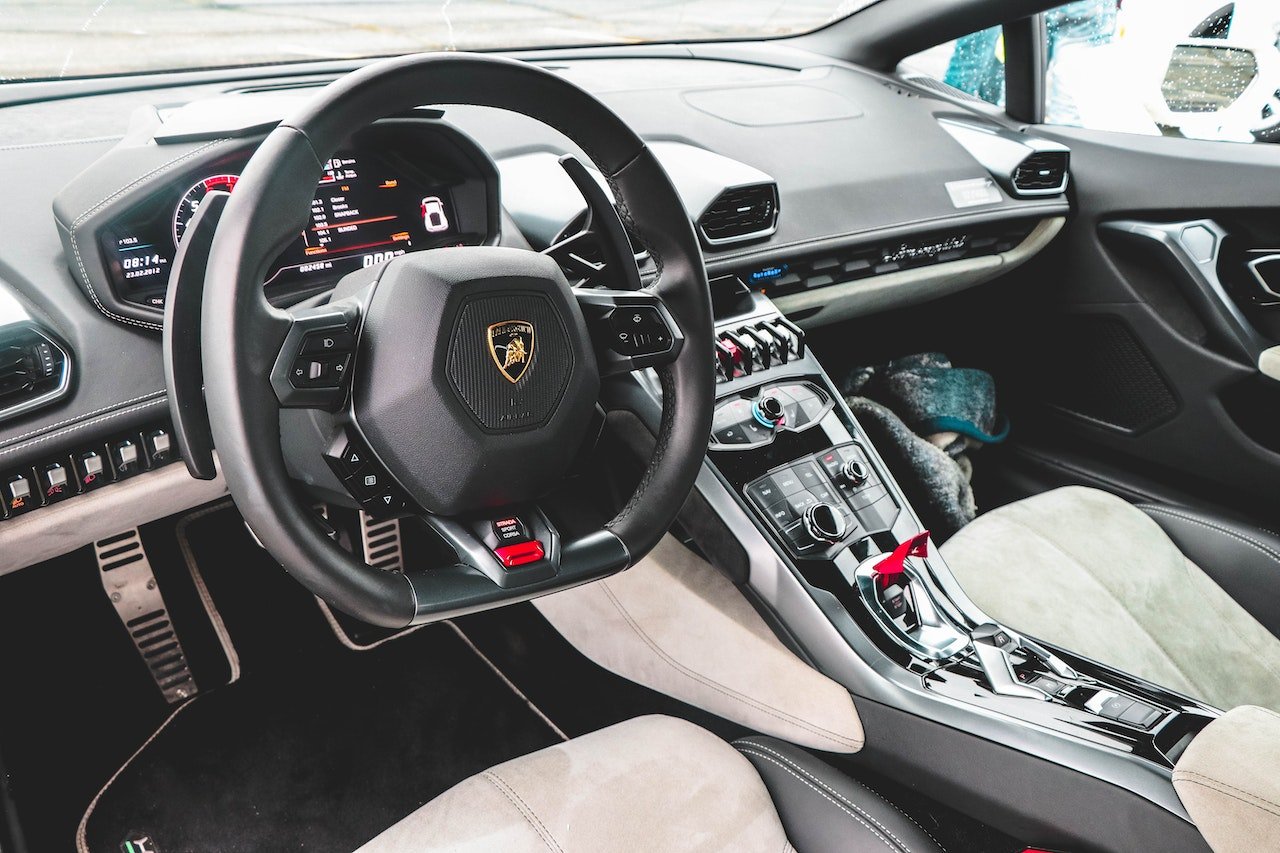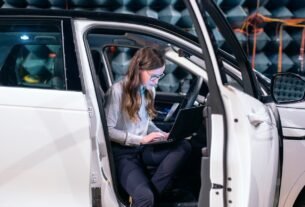The Body Control Module (BCM) is a crucial component in modern automotive electronics. It serves as the central control unit for many of the electrical systems in a vehicle, including lighting, climate control, power windows, door locks, and more. The BCM is responsible for managing the operation of these systems, ensuring that they function properly and efficiently. In this article, we will explore the functions and capabilities of the BCM, as well as its importance in modern automotive technology.
What is a Body Control Module?
The Body Control Module is an electronic control unit (ECU) that is responsible for managing the various electrical systems in a vehicle’s body. The BCM is typically located in the interior of the vehicle, either behind the dashboard or under the seats. It acts as a central hub, receiving information from various sensors throughout the vehicle, and sending commands to the various electrical systems.
The BCM is a microprocessor-based unit that uses software to control the various functions it is responsible for. The software is typically programmed at the factory, but in some cases, it can be reprogrammed by a technician using specialized equipment. The BCM communicates with other ECUs in the vehicle using a variety of protocols, including Controller Area Network (CAN) and Local Interconnect Network (LIN).
How does a Body Control Module work?
The BCM works by receiving input signals from sensors and sending output signals to actuator devices to control the various functions it is responsible for.
Input Signals
The BCM receives input signals from various sensors located throughout the vehicle’s body. These sensors can detect various conditions such as the position of the ignition switch, the status of the door locks, the temperature inside the vehicle, and the position of the exterior lighting controls. The BCM uses these input signals to determine the current status of the different systems it controls.
Output Signals
Based on the input signals it receives, the BCM sends output signals to actuator devices such as relays, motors, and solenoids to control the various electrical systems in the vehicle’s body. For example, if the BCM receives a signal indicating that the driver has turned on the exterior lighting controls, it will send output signals to the lighting system to turn on the headlights, taillights, and other exterior lights.
Communication with Other ECUs
The BCM also communicates with other electronic control units (ECUs) in the vehicle through communication interfaces such as the Controller Area Network (CAN) or Local Interconnect Network (LIN). This allows the BCM to exchange information with other ECUs and coordinate the operation of different systems. For example, the BCM can communicate with the Engine Control Module (ECM) to adjust the engine idle speed based on the electrical load of the vehicle’s accessories.
Software Programs
The BCM’s software programs play a critical role in controlling and coordinating the various functions it is responsible for. The software programs can be divided into three main categories: operating system, device drivers, and application software.
The operating system manages the resources of the microprocessor, including memory and input/output (I/O) ports. It provides a platform for other software programs to run on and ensures that they run smoothly and efficiently.
The device drivers allow the BCM to communicate with sensors and actuator devices. Each device driver is designed to work with a specific type of sensor or actuator device and translates the signals received by the BCM into commands that the device can understand.
The application software controls the various functions of the BCM, such as lighting, climate control, power windows, and door locks. Each application software program interacts with the corresponding device drivers and I/O ports to control the various systems.
Functions of the Body Control Module
The Body Control Module performs a wide range of functions, depending on the make and model of the vehicle. Here are some of the common functions that the BCM is responsible for:
- Lighting Control: The BCM controls the vehicle’s exterior and interior lighting systems, including headlights, taillights, turn signals, and dome lights. It receives input from sensors that detect ambient light levels and sends signals to the lighting systems to adjust their brightness or turn them on or off.
- Climate Control: The BCM manages the heating, ventilation, and air conditioning (HVAC) systems in the vehicle. It receives input from temperature sensors and sends signals to the HVAC system to adjust the temperature and fan speed.
- Power Windows: The BCM controls the power windows in the vehicle, allowing them to be raised and lowered with the touch of a button. It receives input from the window switches and sends signals to the window motors to move the windows up or down.
- Door Locks: The BCM manages the power door lock system in the vehicle, allowing the doors to be locked and unlocked with the touch of a button. It receives input from the door lock switches and sends signals to the door lock motors to lock or unlock the doors.
- Wipers: The BCM controls the windshield wiper system, allowing the driver to adjust the speed and timing of the wipers. It receives input from a rain sensor or the driver’s controls and sends signals to the wiper motor to control its operation.
Body Control Module Architecture
The BCM’s architecture includes hardware components and software programs that work together to control and coordinate the various functions it is responsible for.
Hardware Components
The hardware components of the BCM include a microprocessor, memory, input/output (I/O) ports, and communication interfaces. Here’s a brief overview of each component:
- Microprocessor: The microprocessor is the central processing unit (CPU) of the BCM. It performs arithmetic and logical operations and executes software instructions.
- Memory: The memory of the BCM consists of both random access memory (RAM) and read-only memory (ROM). The RAM is used for temporary data storage, while the ROM contains the software programs that control the BCM’s functions.
- I/O Ports: The I/O ports of the BCM allow it to receive input signals from sensors and send output signals to actuator devices. The I/O ports can be analog or digital, depending on the type of signals they receive or send.
- Communication Interfaces: The BCM communicates with other ECUs in the vehicle through communication interfaces such as the Controller Area Network (CAN) and Local Interconnect Network (LIN). These interfaces allow the BCM to exchange information with other ECUs and coordinate the operation of different systems.
Software Programs
The software programs of the BCM are responsible for controlling and coordinating the various electrical systems in the vehicle’s body. The software programs are typically pre-installed at the factory, but they can also be updated or reprogrammed as needed. Here are some of the software programs that are typically included in the BCM:
- Operating System: The operating system of the BCM manages the resources of the microprocessor, including memory and I/O ports. It also provides a platform for other software programs to run on.
- Device Drivers: The device drivers of the BCM allow it to communicate with sensors and actuator devices. Each device driver is designed to work with a specific type of sensor or actuator device.
- Application Software: The application software of the BCM controls the different functions it is responsible for, such as lighting, climate control, power windows, and door locks. Each application software program is designed to interact with the corresponding device drivers and I/O ports.
- Diagnostic Software: The diagnostic software of the BCM allows technicians to diagnose and troubleshoot problems with the BCM and the systems it controls. It can also generate fault codes that indicate the nature of the problem.
Importance of the Body Control Module
The Body Control Module plays a critical role in modern automotive electronics. Without the BCM, many of the electrical systems in the vehicle would not function properly or efficiently. The BCM’s ability to manage multiple systems and communicate with other ECUs in the vehicle allows for greater integration and coordination of vehicle functions, resulting in improved performance, reliability, and safety.
Additionally, the BCM’s software can be updated to fix bugs or add new features, allowing for greater flexibility and adaptability. This means that the BCM can continue to function effectively even as new technologies and systems are added to the vehicle.
Conclusion
The Body Control Module is a crucial component of modern automotive electronics. It manages the operation of many of the electrical systems in a vehicle’s body, including lighting, climate control, power windows, and door locks. The BCM’s ability to communicate with other ECUs in the vehicle and update its software ensures that it can continue to function effectively even as new technologies and systems are added to the vehicle. Its importance


